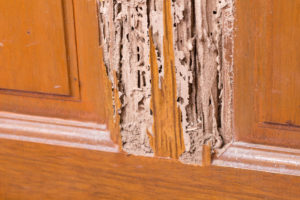 There are certain terms sure to horrify any homeowner who hears them, such as “cracked foundation”, “roof leak”, or “structural defect”. Such terms are often associated with major repairs and expense. However, few terms pack more punch than “infestation”.
There are certain terms sure to horrify any homeowner who hears them, such as “cracked foundation”, “roof leak”, or “structural defect”. Such terms are often associated with major repairs and expense. However, few terms pack more punch than “infestation”.
The important thing to understand about all of these terms, though, is that early detection can save you a lot. If these problems are left untreated, they will get worse, and they could compromise the integrity of your structure. At Above Grade Home Inspections, we understand how important your home is and we know that you never want to hear the bad news that wood destroying organisms, or WDOs, have infiltrated your structure.
However, we also know the value of finding these infestations and eradicating them before more damage can be done. This is why we are proud to offer WDO inspection as part of our services, even though it is not necessarily included in the typical home inspection process. When you partner with Above Grade Home Inspections, you’ll receive the most complete assessment of your property, and the best opportunity to make informed decisions.
What are common types of WDOs? How does an inspection uncover them? Why is having this inspection so important during the home inspection process?
Types of WDOs
When you hear the term “wood destroying organism”, you probably think of termites. These are scary enough in and of themselves for the sheer amount of damage they can cause and the expense to eliminate them. However, they are not the only type of WDO that could infiltrate your home.
Other common culprits are carpenter ants, carpenter bees, and wood beetles. These wood damaging insects could vary by region. Some prefer warmer climates while others flourish in cool weather. Some like humidity. Some proliferate in soft woods while others prefer hardwoods.
The damage caused by different types of wood damaging insects also varies. For example, termites, carpenter ants, and certain types of beetles (such as powderpost beetles) tend to cause extensive damage to structures because they continue to spread and breed.
Other types of beetles may bore into wood to breed, but cause only limited damage because they progress no further. Carpenter bees, on the other hand, tend to create large, shallow holes that only truly cause damage when water gets inside and leads to rot and mold.
Insects aren’t the only wood destroying organisms that could affect your home. Fungi could also become a problem if it goes undetected and untreated. It could lead to extensive dry rot that weakens the structural integrity of your home.
At Above Grade Home Inspections, we believe in providing the most comprehensive home inspection services so that you have the greatest opportunity to maintain the value and integrity of your home. Adding a WDO inspection to your service is just one more way to protect your biggest investment, your family home.
WDO Inspection Process
There are two parts to the WDO inspection process: a visual examination and the use of infrared thermal imaging technology. A typical home inspection includes a thorough visual examination of both the exterior and interior of the structure, including roofing, attic, foundation, basement, crawlspaces, and HVAC, plumbing, and electrical systems.
During the course of this inspection, the average inspector may or may not uncover evidence of WDOs (either insects or fungi). Often, WDOs are hidden in the home, inside the walls where wood is exposed. The WDOs (or evidence of their passing) are most likely to be visible in unfinished areas like attics, basements, and crawlspaces, just for example.
However, an inspector trained for WDO inspection has greater knowledge and tools to draw on than the average home inspector. One of the best tools for identifying wood destroying organisms in the home is an infrared thermal imaging camera. This can not only help an inspector to uncover evidence of active infestation, but also to find wet, dry, warm, or cool areas that could attract different types of WDOs, giving you the information needed to protect your home against future infestations.
Benefits of WDO Inspection
If your inspector finds evidence of WDOs in your structure, the benefits of the examination are obvious. You’ll be able to take steps to eliminate pests or fungi, repair any damage done, and prevent further damage to your home. Even if you don’t find WDOs, you’ll still gain insight into areas of the home that could attract pests or fungi, such as areas of the home in contact with soil, or areas where moisture permeates the wood.
Above Grade Home Inspections strives to provide services that go above and beyond, whether you’re seeking a full home inspection or extras like WDO inspection. Contact us today at 845-345-8967 or toddwny@yahoo.com to request a quote or schedule an appointment.


